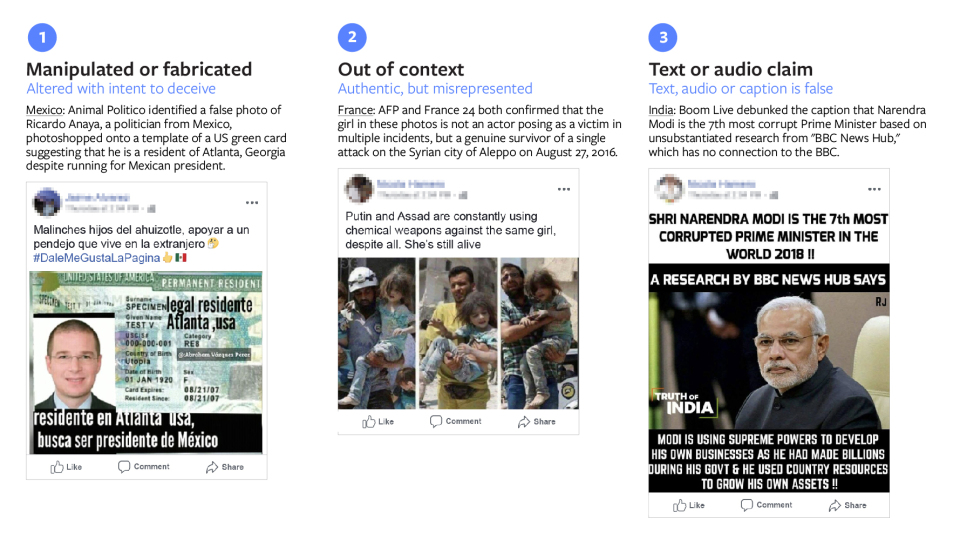For the past two years, Facebook has been working with independent third-party fact-checkers to fight misinformation but till now they focused on reviewing articles. However, people are now sharing millions of photos and videos on Facebook every day and is particularly compelling because it’s visual.
That said, it also creates an easy opportunity for manipulation by bad actors. To identify false content, Facebook today expanded its fact-checking to photos and videos.
“We’re expanding fact-checking for photos and videos to all of our 27 partners in 17 countries around the world (and are regularly on-boarding new fact-checking partners). This will help us identify and take action against more types of misinformation, faster,” said Antonia Woodford, Product Manager, Facebook.
So how does this work?
According to a Facebook’s research the misinformation in photos and videos usually falls into three categories: (1) Manipulated or Fabricated, (2) Out of Context, and (3) Text or Audio Claim. These are the kinds of false photos and videos that we see on Facebook and hope to further reduce with the expansion of photo and video fact-checking.

Facebook has built a machine learning model that uses various engagement signals, including feedback from people on Facebook, to identify potentially false content. The company then sends these photos and videos to fact-checkers for their review, or fact-checkers can surface content on their own.
Many of our third-party fact-checking partners have expertise evaluating photos and videos and are trained in visual verification techniques, such as reverse image searching and analysing image metadata, like when and where the photo or video was taken,” the company said.
Facebook currently uses optical character recognition (OCR) to extract text from photos and compare that text to headlines from fact-checkers’ articles.
“We know that fighting false news is a long-term commitment as the tactics used by bad actors are always changing. As we take action in the short-term, we’re also continuing to invest in more technology and partnerships so that we can stay ahead of new types of misinformation in the future,” added Woodford.
